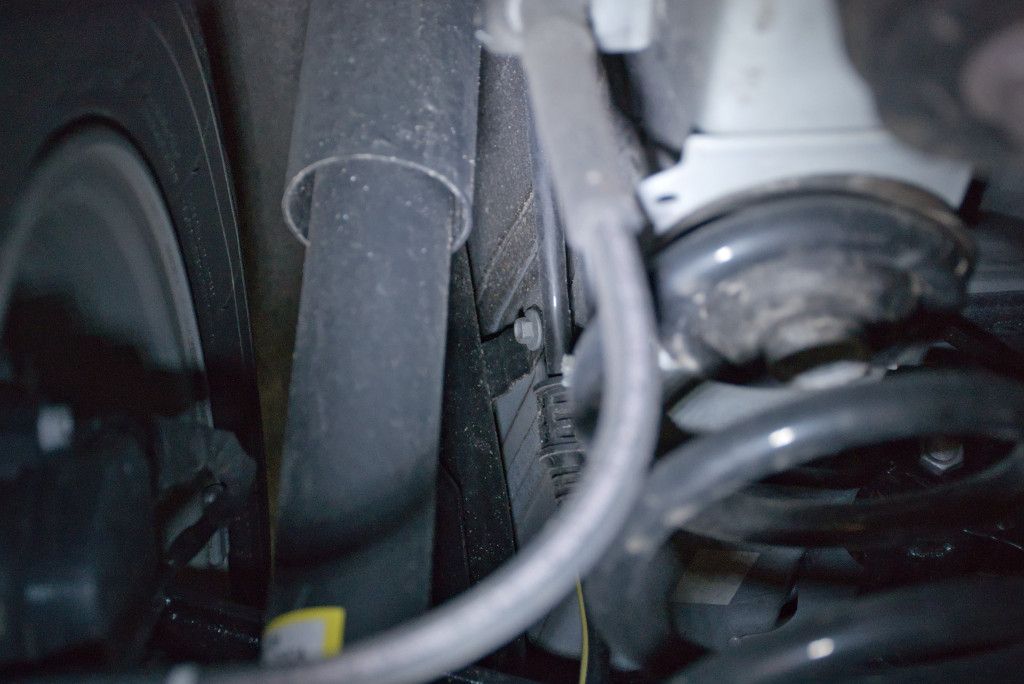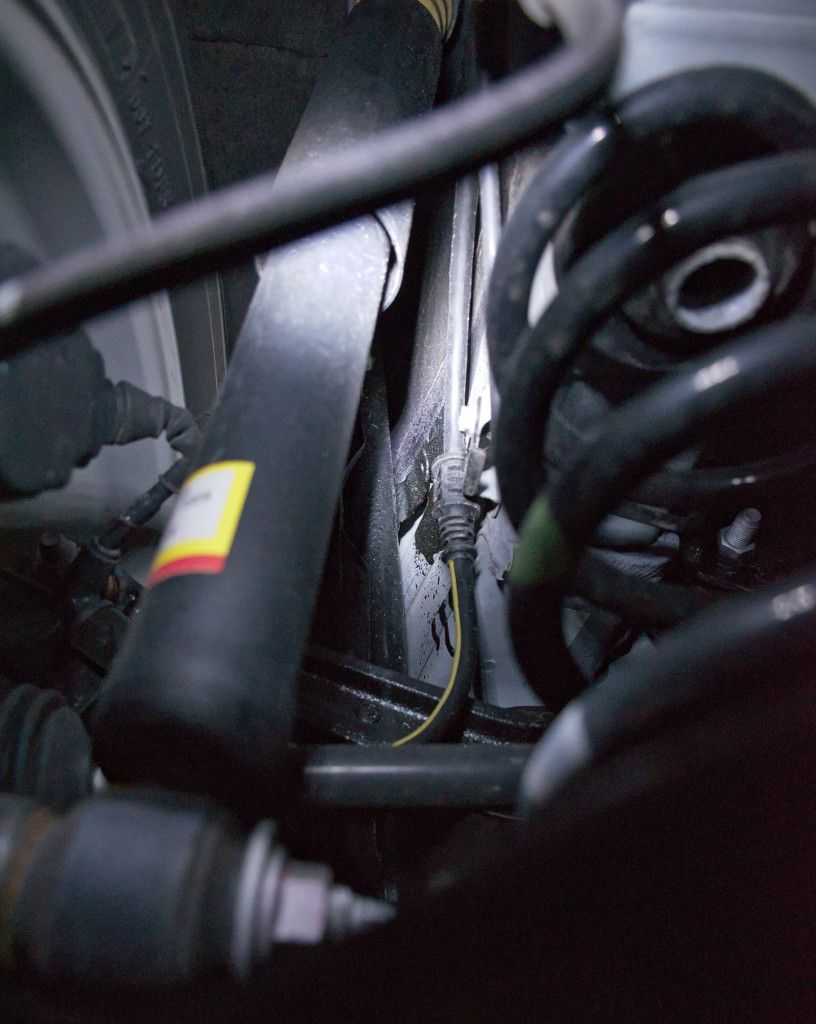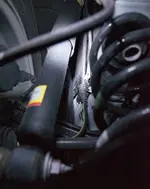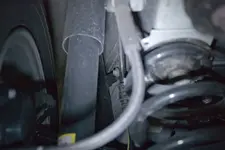I'm no mechanical engineer, but I have a feeling you guys might be on a wild goose chase. Couldn't it be that another change somewhere along the fill tube made the assembly more rigid and prone to break in the wrong place, and that the easiest way to compensate is to remove a bolt that was there (and identical) in previous models?
You are using an out of date browser. It may not display this or other websites correctly.
You should upgrade or use an alternative browser.
You should upgrade or use an alternative browser.
New owner (maybe?) + Recall Notice!?
- Thread starter silvercx
- Start date
I'm no mechanical engineer, but I have a feeling you guys might be on a wild goose chase. Couldn't it be that another change somewhere along the fill tube made the assembly more rigid and prone to break in the wrong place, and that the easiest way to compensate is to remove a bolt that was there (and identical) in previous models?
Totally plausible... thought occurred to me as well.
Just went in for the fix today. Looks like they sprayed something black on the hole after removing the bolt, probably to prevent rust. The pics were taken from the ground behind the rear left wheel.
For full-size photos:
https://goo.gl/photos/MfNzH12N3mCba4Dc6


For full-size photos:
https://goo.gl/photos/MfNzH12N3mCba4Dc6
Attachments
1
123373
It would interesting to see if the 2016.5 have a redesigned rounded head bolt. Doesn't make sense to pull a bolt that is there for a reason and slap undercoating on it to prevent rust lol. Basically your just burying any oxidation that has already occurred. It bet they don't even try to remove any road grime. It would also be interesting to see how quickly it rubs off since undercoating is not going to prevent movement, hence the reason a bolt was there in the first place.
- :
- Plano, Texas, USA
Recall Notice!?
"Owners of record will be notified of this issue and instructed to take their vehicles to a Mazda dealer for repair. The repair will be to remove an attachment bolt on a left rear side member attaching the bracket of the fuel filler pipe. This will prevent the rupture on the fuel filler pipe by changing the load path during the rear crash impact. For the remedy in the field and at ports, a tape will be applied to cover the hole for the bolt mount.. For the production on or after February 1, 2016, a rubber pad will be placed between the body member and the bracket and a plastic fastener will be used for attaching the bolt. The repair will be performed free of charge to the vehicle owners.
How Remedy Component Differs from Recalled Component : The attachment between the fuel filler pipe and the left rear side member will be changed, so it can be distinguished easily when it is inspected the area."
Exactly! Especially the filler neck is wobbling as is. I've said in another thread that this is simply a half-assed patch job by Mazda trying to resume CX-5's sale quickly. The long-term solution, which I doubt any current CX-5 owner will be benefited by it, is outlined in this NHTSA document:It would interesting to see if the 2016.5 have a redesigned rounded head bolt. Doesn't make sense to pull a bolt that is there for a reason and slap undercoating on it to prevent rust lol. Basically your just burying any oxidation that has already occurred. It bet they don't even try to remove any road grime. It would also be interesting to see how quickly it rubs off since undercoating is not going to prevent movement, hence the reason a bolt was there in the first place.
"Owners of record will be notified of this issue and instructed to take their vehicles to a Mazda dealer for repair. The repair will be to remove an attachment bolt on a left rear side member attaching the bracket of the fuel filler pipe. This will prevent the rupture on the fuel filler pipe by changing the load path during the rear crash impact. For the remedy in the field and at ports, a tape will be applied to cover the hole for the bolt mount.. For the production on or after February 1, 2016, a rubber pad will be placed between the body member and the bracket and a plastic fastener will be used for attaching the bolt. The repair will be performed free of charge to the vehicle owners.
How Remedy Component Differs from Recalled Component : The attachment between the fuel filler pipe and the left rear side member will be changed, so it can be distinguished easily when it is inspected the area."
It would interesting to see if the 2016.5 have a redesigned rounded head bolt.
I don't think the problem was that the bolt head was too sharp - rather that it held the filler tube too securely which could cause the tube to separate and spill fuel in the event of a severe collision that displaced various parts of the car by a foot or more. With the filler tube released from it's anchor, it is less likely to rupture.
Doesn't make sense to pull a bolt that is there for a reason and slap undercoating on it to prevent rust lol.
This statement makes it sound like you think you know more than the actual engineering team that studied the test crash results in detail and engineered a more safe solution. My assumption would be the team determined the extra attachment point did not function as intended and was therefore counter-productive and unnecessary. Where does your extra insight come from? Were you simply born telepathic and smarter than the people who were presented with the crash test results? If you know something they don't, please share!
Basically your just burying any oxidation that has already occurred. It bet they don't even try to remove any road grime.
Like any repair, the quality of the workmanship is largely dependent upon the individual who performs the work. However, I think the application of paint or undercoating is a good idea to cover the bare metal (which was previously covered by the attachment point). I think you are worrying about nothing.
It would also be interesting to see how quickly it rubs off since undercoating is not going to prevent movement, hence the reason a bolt was there in the first place.
If the (now unattached) bracket contacts the sheet metal as the car is driven, you are going to hear it as a rattle or a clunk. I suspect this isn't an issue or else Mazda would have designed a plastic break-away attachment. Time will tell but you do seem unusually untrusting to the point that it makes me wonder what you know that the team who signed off on this fix doesn't know. My guess is absolutely nothing.
Exactly! Especially the filler neck is wobbling as is. I've said in another thread that this is simply a half-assed patch job by Mazda trying to resume CX-5's sale quickly. The long-term solution, which I doubt any current CX-5 owner will be benefited by it, is outlined in this NHTSA document:
"Owners of record will be notified of this issue and instructed to take their vehicles to a Mazda dealer for repair. The repair will be to remove an attachment bolt on a left rear side member attaching the bracket of the fuel filler pipe. This will prevent the rupture on the fuel filler pipe by changing the load path during the rear crash impact. For the remedy in the field and at ports, a tape will be applied to cover the hole for the bolt mount.. For the production on or after February 1, 2016, a rubber pad will be placed between the body member and the bracket and a plastic fastener will be used for attaching the bolt. The repair will be performed free of charge to the vehicle owners.
How Remedy Component Differs from Recalled Component : The attachment between the fuel filler pipe and the left rear side member will be changed, so it can be distinguished easily when it is inspected the area."
Have to agree with you and heritage07. Not really a good fix. This may become a DIY for me. Not degreed, but enough common sense.
This may become a DIY for me. Not degreed, but enough common sense.
I would recommend against DIY fix. When Mazda performs the recall, they accept liability for your passengers. With hundreds of thousands of recalls, Mazda wants to be sure their fix is safe and effective. Burning to death is considered one of the worst ways to go and I would hate to be rear-ended and find out that I am being held responsible for the fire that occurred because I knew about the recall but decided to "fix" it using an alternative method I devised using "common sense".
It makes no sense why you would attempt this fix yourself. Its free for the dealer to do, you know its going to be done correctly, and documented correctly for the future if you decide to trade in. And as mike said, Mazda accepts liability. Just take it to the dealer. Its not hard.
Why am I not getting this?It makes no sense why you would attempt this fix yourself. Its free for the dealer to do, you know its going to be done correctly, and documented correctly for the future if you decide to trade in. And as mike said, Mazda accepts liability. Just take it to the dealer. Its not hard.
For the production on or after February 1, 2016, a rubber pad will be placed between the body member and the bracket and a plastic fastener will be used for attaching the bolt.
Why am I not getting this?
For the production on or after February 1, 2016, a rubber pad will be placed between the body member and the bracket and a plastic fastener will be used for attaching the bolt.
I'm going to guess having the filler tube positioned correctly on the sub-assembly assists when two or more sub-assemblies are brought together. When a car is designed, how everything fits together at the various stages of assembly needs to be considered.
1
123373
This statement makes it sound like you think you know more than the actual engineering team that studied the test crash results in detail and engineered a more safe solution. My assumption would be the team determined the extra attachment point did not function as intended and was therefore counter-productive and unnecessary. Where does your extra insight come from? Were you simply born telepathic and smarter than the people who were presented with the crash test results? If you know something they don't, please share!.
Mike this is just sheer common sence, no engineering degree necessary! Looks like the engineers have a fix based on the new rubber pad and plastic fastener. The bottom line is the engineers had no fix and decided to just remove the bolt. I call BS. Just because you disagree doesn't mean your right or Mazda engineers are perfect. Do you work for Mazda, if not you should.
Mike this is just sheer common sence, no engineering degree necessary! Looks like the engineers have a fix based on the new rubber pad and plastic fastener. The bottom line is the engineers had no fix and decided to just remove the bolt. I call BS. Just because you disagree doesn't mean your right or Mazda engineers are perfect. Do you work for Mazda, if not you should.
If I did work for with the Mazda team that implemented this solution, I would have access to all the details, all the test results as well as the needs of the assembly line. In that case I would likely be laughing even harder at your criticisms, considering that they come from someone on the outside looking in, without any of the test results and without even understanding why that bolt was there to begin with.
I'm glad you can overcome such serious barriers due to the amazing amount of "common sense" you posses. It's quite unusual for anyone to have such good "common sense"!
If I did work for with the Mazda team that implemented this solution, I would have access to all the details, all the test results as well as the needs of the assembly line. In that case I would likely be laughing even harder at your criticisms, considering that they come from someone on the outside looking in, without any of the test results and without even understanding why that bolt was there to begin with.
I'm glad you can overcome such serious barriers due to the amazing amount of "common sense" you posses. It's quite unusual for anyone to have such good "common sense"!
Mike, have to disagree here. Someone at Mazda said to put in the bolt. Then a recall, and the fix is to remove the bolt. Now new CX-5's have the rubber pad and plastic bolt. Assembly reason, no way. The pipe needs support. A whole bunch of us will be driving around with a pipe and no support. How much time and money would it cost Mazda to remove the bolt, drop the spray of goop, and add a piece of rubber and a plastic bolt. Five minutes of labor and pennies for parts.
When I call I'm going to ask my dealer to order a plastic bolt and a piece of rubber. That's the real fix. Until then, no recall for me. Ask your dealer folks for a real fix, not half as-ed, next please, your good to go.
Mike, have to disagree here. Someone at Mazda said to put in the bolt. Then a recall, and the fix is to remove the bolt. Now new CX-5's have the rubber pad and plastic bolt. Assembly reason, no way. The pipe needs support. A whole bunch of us will be driving around with a pipe and no support. How much time and money would it cost Mazda to remove the bolt, drop the spray of goop, and add a piece of rubber and a plastic bolt. Five minutes of labor and pennies for parts.
When I call I'm going to ask my dealer to order a plastic bolt and a piece of rubber. That's the real fix. Until then, no recall for me. Ask your dealer folks for a real fix, not half as-ed, next please, your good to go.
Well it's your car and you can do what you want with it. I would understand your concern if it was causing a rattle or there was SOME evidence this was going to be a problem, but, without some indication of a problem, I would trust the manufacturer to take care of it. Do you know something that the rest of us don't?
As a guy with no knowledge of cars or engineering, I won't even attempt to think about how the issue should be handled/fixed. However, assuming cars before Feb 2016 and after Feb 2016 are of the same design and suffer the same problem exactly, having two different repair options (where one seems to be better/more elaborated) does raise the question of "why the difference?".
Of course, the assumption could be wrong to begin with, and that the cars after Feb 2016 do have a slightly different design somewhere that requires a more elaborated repair. Either that, or Mazda just simple want to save money with a good-enough repair, but then why don't they just stick to only the cheaper option.
Given that they do have two options, I'm leaning toward the hypothesis that there're differences between cars before and after Feb 2016, and Mazda consciously came out with two options after considering all the data and engineering decisions, and of course, taking into account the cost of the fixes.
The solution with plastic bolt seems to be better and more thorough, thus, seems to be better if you can get that for even cars before Feb 2016. However, we don't know for sure if the presence of the bolt there could cause the problem (for cars before Feb 2016) whether it's metal or plastic. Unless we have all the data and info of the problem, I'd just leave it to Mazda.
Of course, the assumption could be wrong to begin with, and that the cars after Feb 2016 do have a slightly different design somewhere that requires a more elaborated repair. Either that, or Mazda just simple want to save money with a good-enough repair, but then why don't they just stick to only the cheaper option.
Given that they do have two options, I'm leaning toward the hypothesis that there're differences between cars before and after Feb 2016, and Mazda consciously came out with two options after considering all the data and engineering decisions, and of course, taking into account the cost of the fixes.
The solution with plastic bolt seems to be better and more thorough, thus, seems to be better if you can get that for even cars before Feb 2016. However, we don't know for sure if the presence of the bolt there could cause the problem (for cars before Feb 2016) whether it's metal or plastic. Unless we have all the data and info of the problem, I'd just leave it to Mazda.
Last edited:
1
123373
Well it's your car and you can do what you want with it. I would understand your concern if it was causing a rattle or there was SOME evidence this was going to be a problem, but, without some indication of a problem, I would trust the manufacturer to take care of it. Do you know something that the rest of us don't?
No, and I haven't received the recall yet so I will just wait until my next oil change. I used to own a Ford Pinto and they were prone to blow up if hit in the back. I seriously doubt this would ever happen to our CX5's.
Unless we have all the data and info of the problem, I'd just leave it to Mazda.
And that really is the crux of it.
As a guy with no knowledge of cars or engineering, I won't even attempt to think about how the issue should be handled/fixed. However, assuming cars before Feb 2016 and after Feb 2016 are of the same design and suffer the same problem exactly, having two different repair options (where one seems to be better/more elaborated) does raise the question of "why the difference?".
Of course, the assumption could be wrong to begin with, and that the cars after Feb 2016 do have a slightly different design somewhere that requires a more elaborated repair. Either that, or Mazda just simple want to save money with a good-enough repair, but then why don't they just stick to only the cheaper option.
Given that they do have two options, I'm leaning toward the hypothesis that there're differences between cars before and after Feb 2016, and Mazda consciously came out with two options after considering all the data and engineering decisions, and of course, taking into account the cost of the fixes.
The solution with plastic bolt seems to be better and more thorough, thus, seems to be better if you can get that for even cars before Feb 2016. However, we don't know for sure if the presence of the bolt there could cause the problem (for cars before Feb 2016) whether it's metal or plastic. Unless we have all the data and info of the problem, I'd just leave it to Mazda.
It's not exactly rocket science. The problem is that when the car is hit hard from behind, the fuel line will bend and rupture. The solution is to remove that bolt, but that bolt was itself added as part of a design revision because Mazda decided the fuel line either needed more support or needed to be held in place so it wouldn't rub up against the components around it. The compromise solution is to use a plastic bolt that will shear off rather than bend the fuel line in a crash. The cheap no-parts solution is to remove the bolt, paint the now-unused mounting point, and rely on the fact that by the time rubbing or vibration has caused enough damage to be actionable, the car will be long out of warranty.
New Posts and Comments
- Replies
- 52
- Views
- 8K
- Replies
- 10K
- Views
- 3M


